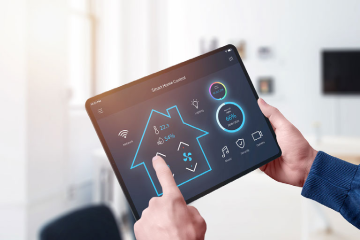Under the Inflation Reduction Act of 2022, tax credits are available for making homes more energy-efficient, using clean energy sources and retrofitting heating and cooling systems.

The energy-efficient home improvement credit has been raised to $1,200 from the $500 lifetime credit for installing new doors, windows, skylights, insulation and heat pumps. This credit equals 30% of the qualified expenditures you make, including home energy audits, building envelope components, and insulation or air sealing materials.
Home energy audits
The audit must include an inspection of your dwelling, including condominiums, used as your primary residence. You can use the credit for approximately 30% of these costs up to $150.
Building envelope components such as exterior doors
Exterior doors, windows and skylights must meet Energy Star requirements. You can use the credit for 30% of these costs up to $250 per door for a total of $500.
Insulation or air sealing materials and systems
The credit covers 30% of these costs. These materials and systems must meet the International Energy Conservation Code standard criteria from January 2023 to 2025.
Residential Clean Energy Property Credit
The residential clean energy property credit, which is available until 2034, is a 30% credit that now includes battery storage technology as an eligible expense.
To qualify for the credit, the following equipment must meet or exceed the highest efficiency tier established by the Consortium for Energy Efficiency at the beginning of the year in which the property is put into service:
- Central air conditioners.
- Natural gas, propane or oil water heaters.
- Natural gas, propane or oil furnaces and hot water boilers.
- Biomass stoves and boilers with a thermal efficiency rating of 75% or more.
Additionally, the credit applies to improvements or replacements of panelboards, sub-panelboards, branch circuits or feeders installed with building envelope components.
The maximum aggregate tax credit limit for all energy-efficient home improvements, including building envelope components, energy property and home energy audits, is $1,200 per year. However, electric or natural gas heat pump water heaters, heat pumps and biomass stoves or boilers have a separate maximum yearly credit limit of $2,000, which means that the maximum yearly energy-efficient home improvement credit available is $3,200.
The residential clean energy property credit allows for a 30% credit on the cost of eligible expenditures, including the following:
- Solar electric property, which includes some solar roofing tiles and shingles as well as solar panels that serve as solar energy collectors.
- Solar water heaters.
- Fuel cell property expenditures.
- Small wind energy expenditures like turbines.
- Geothermal heat pump property expenditures.
- Battery storage technology expenditures, which allow for a credit of 30% of expenditures up to a maximum credit of $500 for each half kilowatt of capacity of the qualified fuel cell property.
To be eligible for credits, improvements made to second homes must meet certain criteria and the home must be used as a residence by the taxpayer. Landlords cannot use credits for any homes rented out but not used by the landlord. In cases where a dwelling is jointly occupied, the maximum credit is $1,667 for each half kilowatt of capacity of qualified fuel cell property.
There is no overall dollar limit for the residential clean energy property credit, but it is generally limited to 30% of qualified expenditures made for property placed in service between 2022 and 2034. The credits cannot be claimed until the year the property is installed.
Building envelope components must be expected to remain in use for at least five years. There is no lifetime limit on other credits, and they are determined yearly. The energy-efficient home improvement credit and the residential clean energy property credit are nonrefundable personal tax credits.
Taxpayers can only use nonrefundable credits to decrease or eliminate tax liability. If the credits exceed the tax liability for the year, the excess credit can be carried forward to the next year.
Taxpayers subject to the alternative minimum tax are eligible to claim these credits, and they can offset the AMT with the credits. For more information, refer to FS-2022-40, the IRS fact sheet on energy-efficient home improvements and residential clean energy credits.
We welcome the opportunity to put our accounting expertise to work for you. To learn more about how our firm can help advance your success, don’t hesitate to contact Kathy Corcoran at (302) 254-8240.
©2024

